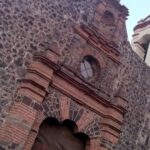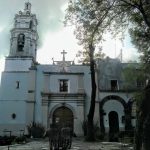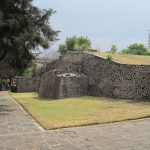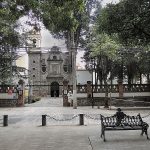
One of the old neighborhoods of Central Mexico City...

One of the original old settlements on the Lake in Mexico City...

One of the city's newest archaeological sites, it's one of the oldest and deepest of shrines in the Valley.

One of Del Valle's best kept secrets is a discreet public park and plaza.

A colonial era church hides one of the original settlements...